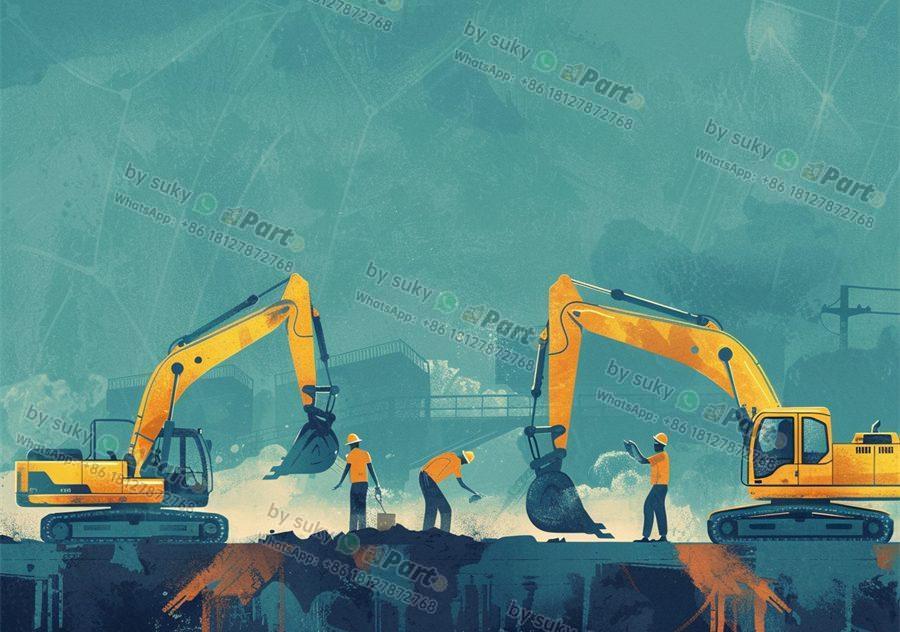Excavators, also known as diggers or backhoes, are powerful construction machines used for digging trenches, foundations, and holes. The wheels on an excavator are commonly referred to as tracks. These tracks provide stability and traction for the excavator to move over rough or uneven terrain. Importers and distributors of construction vehicle parts, particularly those related to excavators, play a crucial role in ensuring that these machines are equipped with high-quality and reliable components.
One of the most important factors to consider when purchasing tracks for excavators is the material they are made of. Tracks are typically made of rubber or steel. Rubber tracks are best suited for working on paved surfaces or delicate terrain, as they provide better grip and do not damage the ground. On the other hand, steel tracks are more durable and are ideal for heavy-duty applications in rugged environments. Importers and distributors need to understand the specific needs of their customers to provide them with the right type of tracks for their excavators.
In addition to the material, the size and design of the tracks are also crucial considerations. Tracks come in various widths and lengths to fit different models of excavators. It is essential for importers and distributors to have a wide range of track sizes available to cater to the needs of various customers. The design of the tracks, such as the tread pattern and shape, also plays a role in determining the performance of the excavator. Importers and distributors should work closely with manufacturers to ensure they are offering tracks that meet the highest standards of quality and performance.
Another important aspect to consider when choosing tracks for excavators is the maintenance and replacement requirements. Tracks are subject to wear and tear over time, especially when used in demanding construction environments. Importers and distributors should provide their customers with guidance on proper track maintenance, such as cleaning and lubrication, to extend the lifespan of the tracks. They should also have replacement tracks readily available to minimize downtime for customers in case of track damage or wear.
In conclusion, tracks are essential components of excavators that play a significant role in their performance and functionality. Importers and distributors of construction vehicle parts need to prioritize the quality, material, size, design, and maintenance of tracks to meet the diverse needs of their customers. By offering a comprehensive range of high-quality tracks and providing excellent customer support, importers and distributors can establish themselves as trusted partners in the construction industry.
For further reading on construction vehicle parts, you may be interested in these articles:
1. “The Importance of Choosing the Right Hydraulic Systems for Excavators”
2. “Key Considerations for Selecting Engine Parts for Construction Vehicles”
173-7252 1737252 Pressure Switch for Caterpillar CAT Engine 3306 3116 3306B


